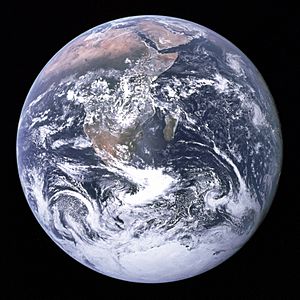Ecoregion facts for kids
An ecoregion is like a giant natural neighborhood. It's a large area of land or water that has its own special mix of plants, animals, and natural conditions. Think of it as a unique part of our planet where living things and their environment are all connected.
These areas are big, and they have distinct natural communities. This means the plants and animals living there are often found together in that specific place. The World Wide Fund for Nature (WWF) helps define these ecoregions. They look at what the natural communities were like before humans made big changes. The WWF has found over 800 land ecoregions and about 450 freshwater ecoregions around the world!
The WWF's full definition of an ecoregion, which many people use, says it's a large area of land or water that has a special group of natural communities that:
- Share most of their species and how nature works.
- Have similar environmental conditions (like weather or soil).
- Work together in ways that are important for them to survive for a long time.
The Global 200 is a special list of ecoregions. The WWF chose these as the most important places to protect on Earth.
Contents
Land Ecoregions: What Are They?
A land, or terrestrial, ecoregion is a specific area of land that is different from the areas around it. It has its own unique features. These include the climate (like how hot or cold it is, or how much rain it gets), the geology (what kind of rocks and land it has), the type of soil, how much water is available, and the special species (animals and plants) that live there.
Examples of Land Ecoregions
Let's look at some examples to understand better:
Desert Ecoregion
Imagine a desert. This ecoregion would have lots of sand and very little water. The temperatures would be super hot during the day and very cold at night. The plants you might see are tough bushes, small trees, or cacti. The animals could be scorpions, small mammals like mice, or spiders, all adapted to the harsh conditions.
Tropical Forest Ecoregion
Now, think about a tropical forest. This ecoregion would be warm all day, every day. It would get a lot of rain all year long. You might find a huge river flowing through it, and the soil would be very rich with organic material. The plants could be giant trees or ferns. The animals might include many insects, colorful birds, different kinds of fish, and apes swinging through the trees.
Ocean Ecoregions: Life Under the Waves

Ocean, or marine, ecoregions are special areas in the world's oceans. The WWF also defines these to help protect marine ecosystems.
How Ocean Ecoregions Are Defined
The way we figure out these ocean ecoregions is similar to how we define land ones. Scientists look at the main types of habitats in the ocean. These include:
- Polar areas: Very cold regions near the North and South Poles.
- Temperate shelfs and seas: Areas with moderate temperatures over continental shelves.
- Upwelling zones: Where cold, nutrient-rich water rises from the deep.
- Tropical coral areas: Warm, shallow waters with coral reefs.
- Pelagic zones: The open ocean, far from the coast and seafloor.
- Abyssal zones: The deep ocean floor.
- Hadal zones: The very deepest parts, like ocean trenches.
These habitat types are like the different types of land environments (called biomes). Then, they look at large ocean regions, similar to the big land ecozones. These include areas like the North Temperate Atlantic, the Southern Ocean, and the Arctic.
The classification of ocean ecoregions is still being worked on. For now, the main focus is on the most important areas for conservation, which are part of the Global 200. You can find a full list of these important ocean ecoregions in the Global 200 Marine ecoregions section.
Freshwater Ecoregions: Rivers, Lakes, and More
Freshwater ecoregions are the freshwater habitats in a specific geographic area. This includes all the rivers, streams, lakes, and wetlands (like swamps or marshes). These are different from land ecoregions, which focus on land plants and animals, and ocean ecoregions, which are about ocean life.
The WWF talks about seven main types of freshwater ecoregions:
- Large rivers: Big, long rivers.
- Large river headwaters: The areas where large rivers begin.
- Large river deltas: Where large rivers meet the sea and spread out.
- Small rivers: Smaller streams and rivers.
- Large lakes: Big bodies of freshwater.
- Small lakes: Smaller lakes.
- Xeric basins: Dry areas with temporary or salty water bodies.
Many important freshwater ecoregions are also listed in the Global 200. These are the WWF's top priority areas for protecting biodiversity (all the different kinds of life).
Related pages
Images for kids
-
The Ötztal Alps, a mountain range in Europe, are part of the Central Eastern Alps ecoregion.
-
A conifer forest in the Swiss Alps (National Park).
See also
 In Spanish: Ecorregión para niños
In Spanish: Ecorregión para niños








